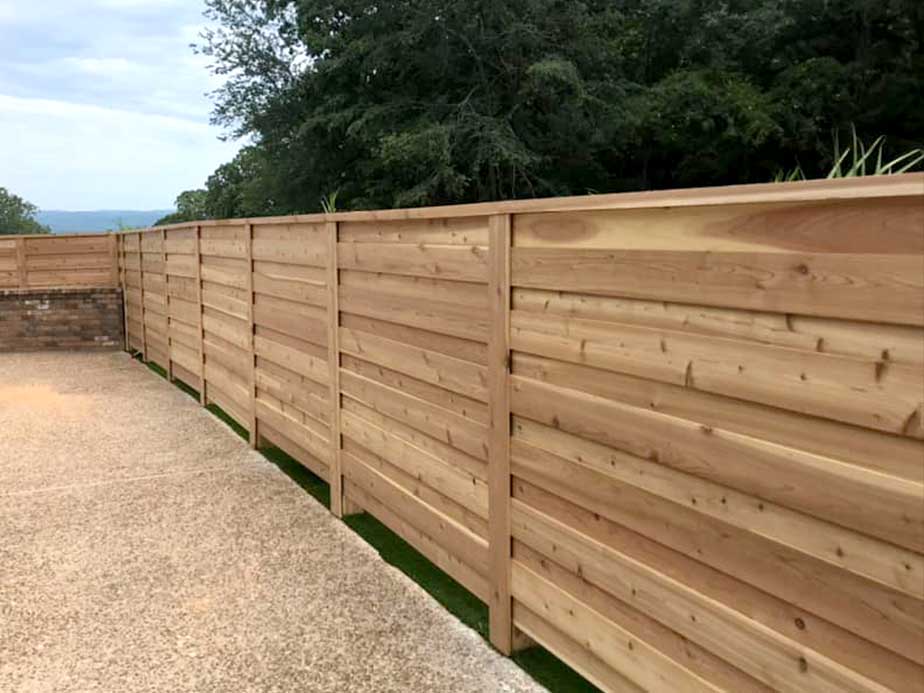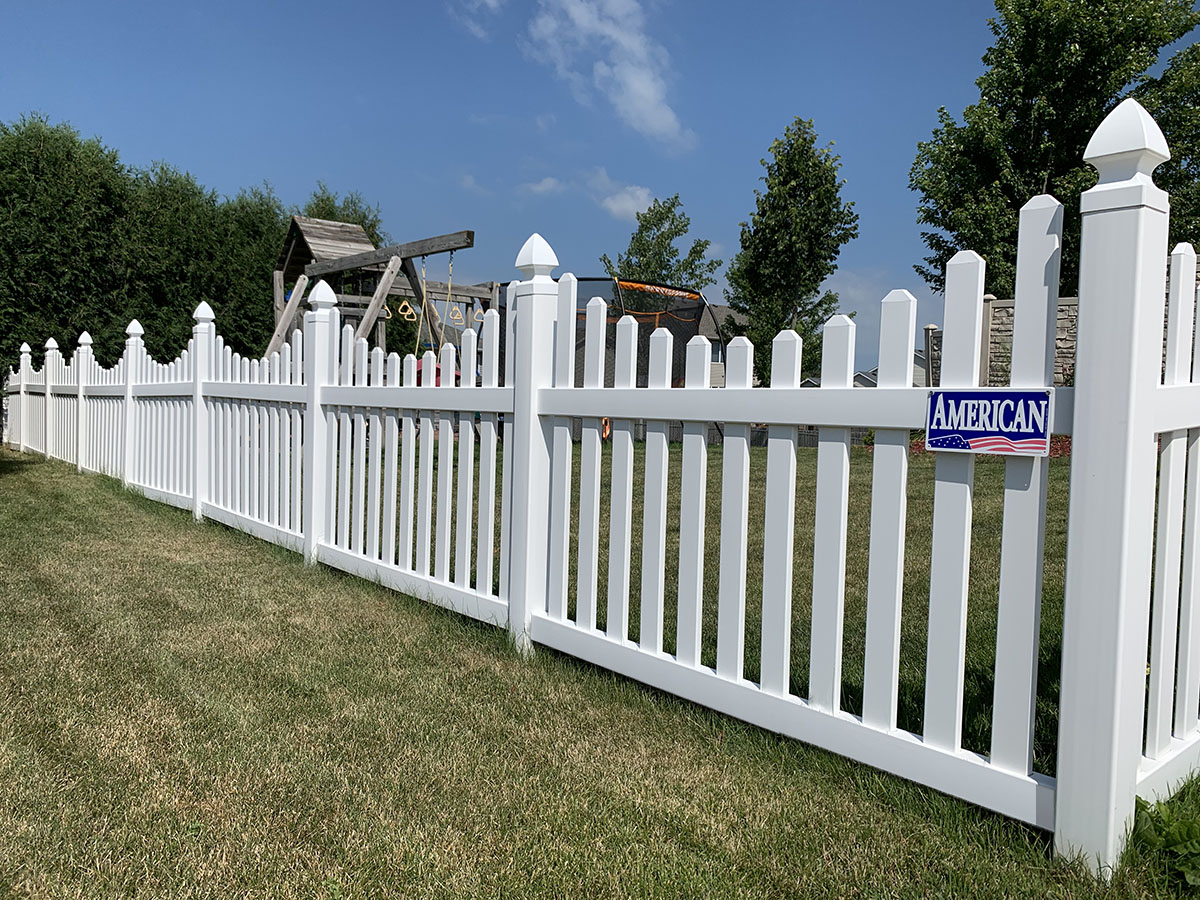All Categories
Featured
Table of Contents
- – 1. Flexible Layouts for Irregular Boundaries.
- – 2. Solutions for Sloped or Tiered Surface.
- – 3. Material Selection for Personalization and ...
- – 4. Personal Privacy and Aesthetic Modifications.
- – 5. Customized Gates and Accessibility Points.
- – 6. Specialized Finishes and Color Styles for C...
- – Why Custom Fence is Worth the Investment for D...

For properties with uneven boundaries or distinctive landscapes, typical fence alternatives typically drop short in offering a perfect fit. Customizable fencing supplies a remedy for these special designs, permitting homeowner to achieve a fence that completely straightens with the residential property's all-natural functions and wanted design. With personalization alternatives available in products, designs, and installment approaches, residential property proprietors can discover the appropriate equilibrium between function and aesthetics, creating a fence that improves their outside area. Right here's a summary of personalized fencing choices created to satisfy the needs of special property designs.
1. Flexible Layouts for Irregular Boundaries.
Not all residential properties follow a straight line, and uneven limits can present a challenge when mounting a fence. Custom fencing provides options that satisfy special property lines, integrating bends, curves, and unusual shapes effortlessly.Rounded and Tilted Panels: Customized secure fencing enables curved or angled panels that comply with property lines, also if they're not straight. This can be specifically advantageous for homes with winding paths, designed yards, or non-standard plot forms.
Special Layout Accommodations: Personalized fencing also includes adaptations for properties with special attributes like pools, yards, or outside living locations. Fencing can be designed to give personal privacy, defense, or looks for these spaces without interfering with the all-natural flow of the home's format.
2. Solutions for Sloped or Tiered Surface.
Characteristic on uneven ground need specialized fence methods to make certain both resilience and aesthetic uniformity. Custom secure fencing offers setup methods that adapt to slopes, hillsides, and tiered landscape design.Racked Fence for Gradual Slopes: Racked fencings change to comply with the all-natural slope of the terrain. Each panel is installed at a small angle to keep ground-level call, leading to a smooth, gap-free fencing line. This is ideal for gentle inclines, as it avoids gaps at the fencing's base and provides a refined look.
Stepped Fence for Steeper Grades: For homes with high inclines, stepped fencing produces a stair-step effect, with each panel level yet set up at differing heights. This remedy supplies insurance coverage and security on a lot more significant inclines, guaranteeing privacy and safety while accommodating the terrain.
3. Material Selection for Personalization and Durability.
Selecting the best fence material is necessary for any customized project, as each choice uses one-of-a-kind benefits for various home demands.
Timber Secure Fencing: Timber is among one of the most personalized materials, as it can be shaped, reduced, and discolored to match the precise requirements of any property design. Suitable for rustic or traditional aesthetic appeals, timber secure fencing can be developed in various elevations and patterns, enabling for personal privacy and design.
Vinyl and Compound Fencing: These products are low-maintenance and long lasting, making them suitable for lasting use. They're also offered in a range of shades and textures, including wood-like coatings, which can be tailored to fit bent or straight lines in addition to distinct layouts.
Steel Secure Fencing (Aluminum and Wrought Iron): Metal fence gives both stamina and versatility, specifically for homes requiring included safety. Wrought iron, for instance, can be tailored with attractive elements and is perfect for irregular or sloped buildings because of its resilience and adaptability.
4. Personal Privacy and Aesthetic Modifications.
Personal privacy is a top priority for numerous residential or commercial property proprietors, and custom fence can be created to supply both seclusion and style.Height Customization: An essential function of custom fence is the capability to change fencing height to suit privacy demands. Higher fences can shield homes from sight, while reduced areas enable exposure for beautiful views.
Style Aspects: Personalized develops like lattice tops, shadowbox designs, or mixed-materials provide special aesthetic appeal. Decorative components such as trellises or latticework can offer personal privacy without making the fence really feel excessively encased, using a blend of visibility and seclusion.
5. Customized Gates and Accessibility Points.
Custom-made fencing isn't practically the panels; it likewise includes gates and entrances. Custom-made gates can match the style of the fence, ensuring a cohesive appearance while offering safe and secure access points. Automated entrances, keypad accessibility, and various other safety and security attributes can be included in boost performance, especially for bigger residential properties or business rooms that require controlled gain access to.6. Specialized Finishes and Color Styles for Customization.
For an one-of-a-kind, tailored look, homeowner can choose from different finishes and colors that align with their landscape and building design. Whether picking a natural timber discolor, a personalized plastic color, or a powder-coated steel finish, these alternatives enable for an individualized look that complements the total style of the building.Why Custom Fence is Worth the Investment for Distinct Layouts.
Choosing a personalized fencing option can be an important investment, especially for homes that need specialized layouts due to their design or terrain. Customized fence makes sure an appropriate fit that boosts personal privacy, safety and security, and aesthetic allure. By selecting materials and installment methods that attend to the residential property's certain requirements, homeowner can achieve a fence that not only looks excellent yet additionally stands up to the test of time.For those with special property formats, customized fencing provides sturdiness, adaptability, and design, changing difficult areas into distinct, protected locations.
Table of Contents
- – 1. Flexible Layouts for Irregular Boundaries.
- – 2. Solutions for Sloped or Tiered Surface.
- – 3. Material Selection for Personalization and ...
- – 4. Personal Privacy and Aesthetic Modifications.
- – 5. Customized Gates and Accessibility Points.
- – 6. Specialized Finishes and Color Styles for C...
- – Why Custom Fence is Worth the Investment for D...
Latest Posts
How to Take Care of Your Brand-New Carpet for Enduring Beauty
Published Nov 23, 24
1 min read
Best Wedding Themes and How to Match Your Location
Published Nov 23, 24
2 min read
What to Get out of a Full-Service Automobile Repair Facility
Published Nov 23, 24
0 min read
More
Latest Posts
How to Take Care of Your Brand-New Carpet for Enduring Beauty
Published Nov 23, 24
1 min read
Best Wedding Themes and How to Match Your Location
Published Nov 23, 24
2 min read
What to Get out of a Full-Service Automobile Repair Facility
Published Nov 23, 24
0 min read